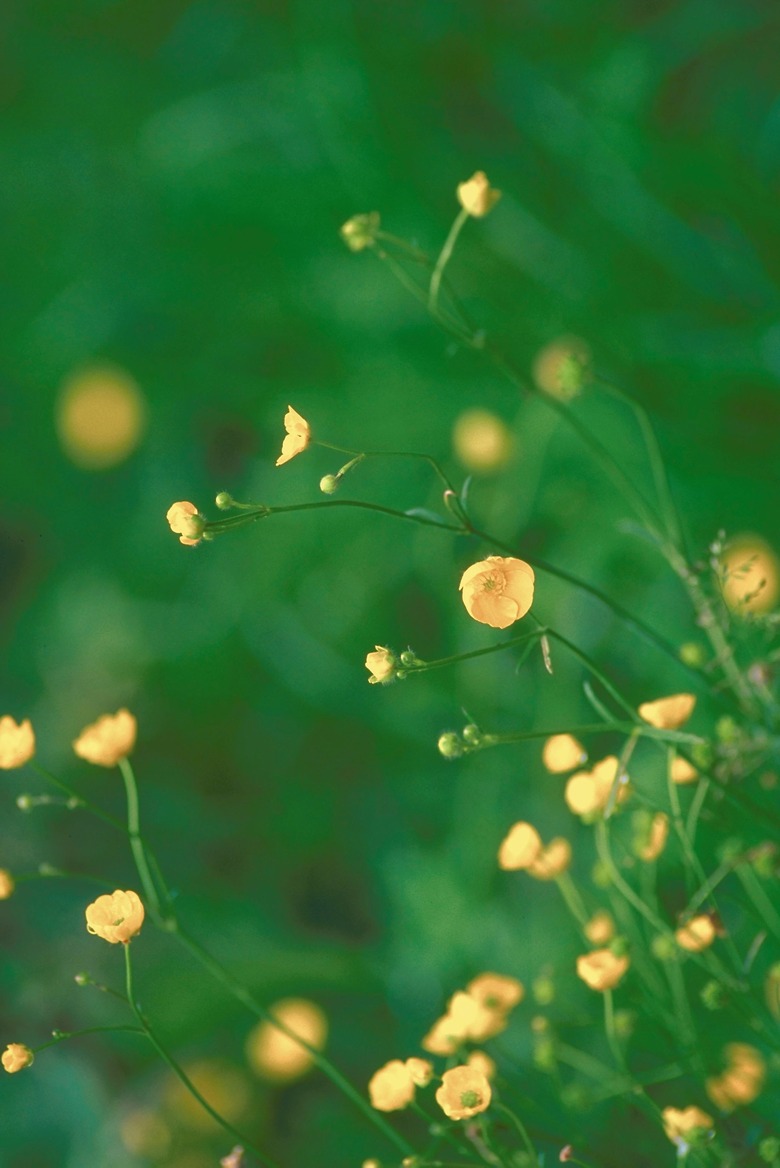Is The Ranunculus A Dicot?
The genus Rununculus includes among other species a wide range of buttercups, golden-flowered perennials that hail from parts of Europe and Asia. In the garden these cheerful plants provide a profusion of blossoms that can last, depending on the species, into late summer. Though flowering plants come in two forms, monocots and dicots, members of the ranunculus genus are the latter.
Step 1
Although monocots and dicots share many of the same characteristics — flowers, leaves, stems and roots — their differences make for overall appearances that contrast starkly. Monocots have a single seed leaf and generally have parallel veins down the center of their long, grasslike leaves when mature. Their blossoms usually have petals grouped in multiples of three, such as the six-petaled daffodil.
Dicots
Step 1
As opposed to monocots, dicots have two seed leaves ("di" means two where "mono" means one). Their leaves are veined with a greater profusion, creating a netlike effect where many smaller veins extend from the central one. Their flowers are usually petaled in groups of four or five, like cherry blossoms. Dicots also have a ringlike arrangement of internal stem veins, whereas monocots have a dispersed vein pattern.
Step 2
- Although monocots and dicots share many of the same characteristics — flowers, leaves, stems and roots — their differences make for overall appearances that contrast starkly.
- Their flowers are usually petaled in groups of four or five, like cherry blossoms.
Ranunculus Genus
Step 1
Buttercups and other species belonging to the genus Ranunculus are dicots. Common examples include the creeping buttercup (Ranunculus repens), which grows well in U.S. Department of Agriculture plant hardiness zones 4 through 9, and the Persian buttercup (Ranunculus asiaticus), which is suited to USDA zones 8 through 10. Both bloom in late spring, although the creeping buttercup will continue through August. Other species in this genus include the early buttercup and the lesser celandine.
Step 2
Garden Uses
Step 1
These brightly flowered perennials are excellent in mass plantings. Creeping buttercup, which can cover a 2- to 3-foot area and spreads rapidly in moist, shady portions of the garden, is especially good for creating ground cover over wide areas. These plants work well for edging beds, creating borders, or filling out containers to sit on the patio or front step. As they love moisture, also consider planting them around the edges of ponds.
Step 2
- Buttercups and other species belonging to the genus Ranunculus are dicots.
- These brightly flowered perennials are excellent in mass plantings.
